Search
Search Results
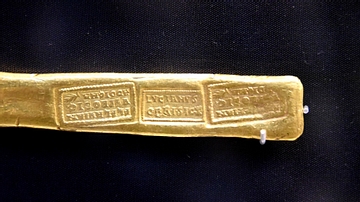
Image
Roman Gold Bar Stamped with Assayers
In the Late Roman Period, precious metal that had been paid in tax was melted down into bars before being re-minted, to eliminate plated forgeries. Because local mint officials could be corrupt, the bars were stamped with the names of the...
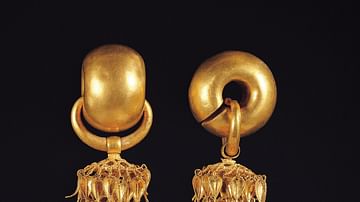
Image
Silla Gold Earrings, National Treasure 52
5-6th century CE gold earrings from the Silla Kingdom (57 BCE - 668 CE) of south-eastern Korea. From a tomb in the Gyeongju area. National Treasure No. 52. (National Museum of Korea, Seoul, South Korea)
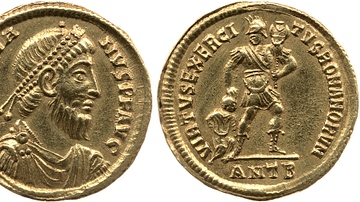
Image
Gold Coin of Julian the Apostate
Gold coin of Roman emperor Julian the Apostate (r. 361-363 CE), minted in Antiochia ad Orontem.
British Museum, London.
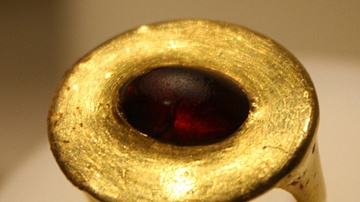
Image
Gold & Garnet Ring, Agrigento
A gold and garnet ring from Agrigento, Sicily, 3rd century BCE. (Archaeological Museum of Agrigento).
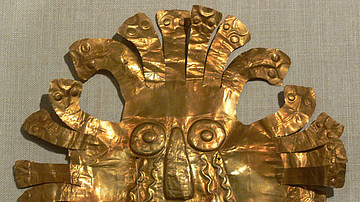
Image
Nazca Gold Mask
A beaten gold mask from the Nazca civilization of Peru, 200 BCE-500 CE. 18.4 x 20.5 cm. The mask may represent a shaman in transformational pose, a common motif in Nazca art. An alternative interpretation is that it represents the weeping...
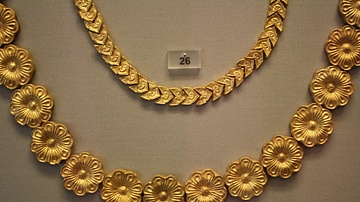
Image
Mycenaean Gold Necklaces, Dendra
A Mycenaean gold necklace from Dendra, 15-14th centuries BCE. (National Archaeological Museum, Athens)

Image
Gold Ring from Mycenae
A Mycenaean gold ring depicting a hunting scene. From Grave Circle A, Mycenae, 16th century BCE. (National Archaeological Museum, Athens)
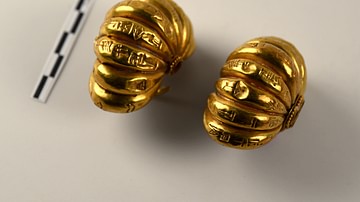
Image
Mesopotamian Gold Earrings, Ur III
Both earrings are placed in a mirror-image position, with the lower surfaces facing each other. Each earring is composed of nine lunar-shaped segments forming a flattened half- ball. The cuneiform signs run vertically from above downward...
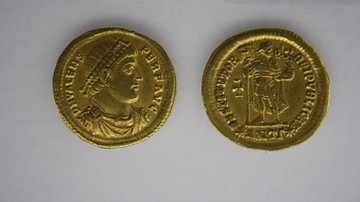
Image
Valens Gold Solidus
Two gold solidus coins depicting Roman emperor Valens, r. 364-378 BCE. Provenance: north-west France. (Vannes Archaeological Museum, France)
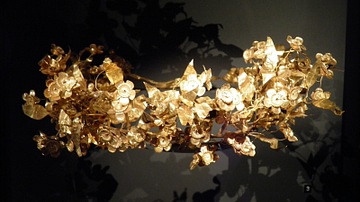
Image
Gold Myrtle Wreath
Gold myrtle wreath from Macedonia, 4th century BCE. A religious symbol, also indicating social position, it was worn at public appearances, religious ceremonies and symposia, and accompanied its owner to the grave. Archaeological Museum...